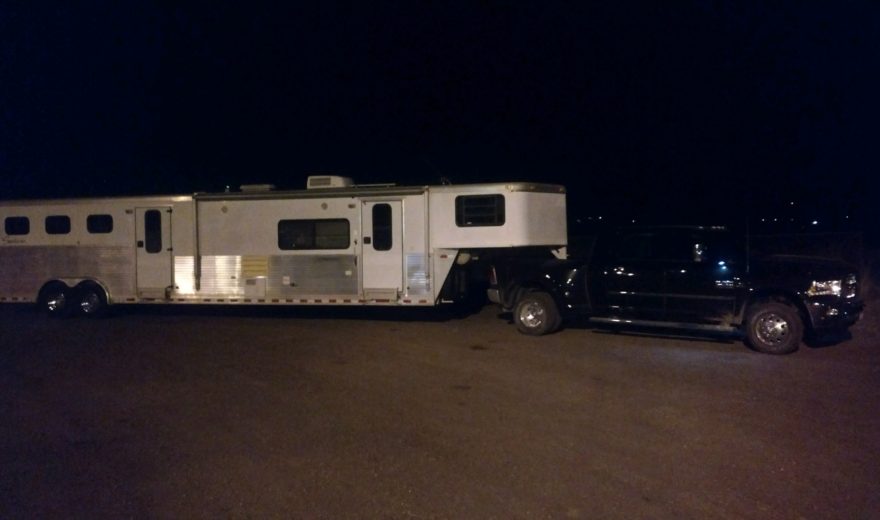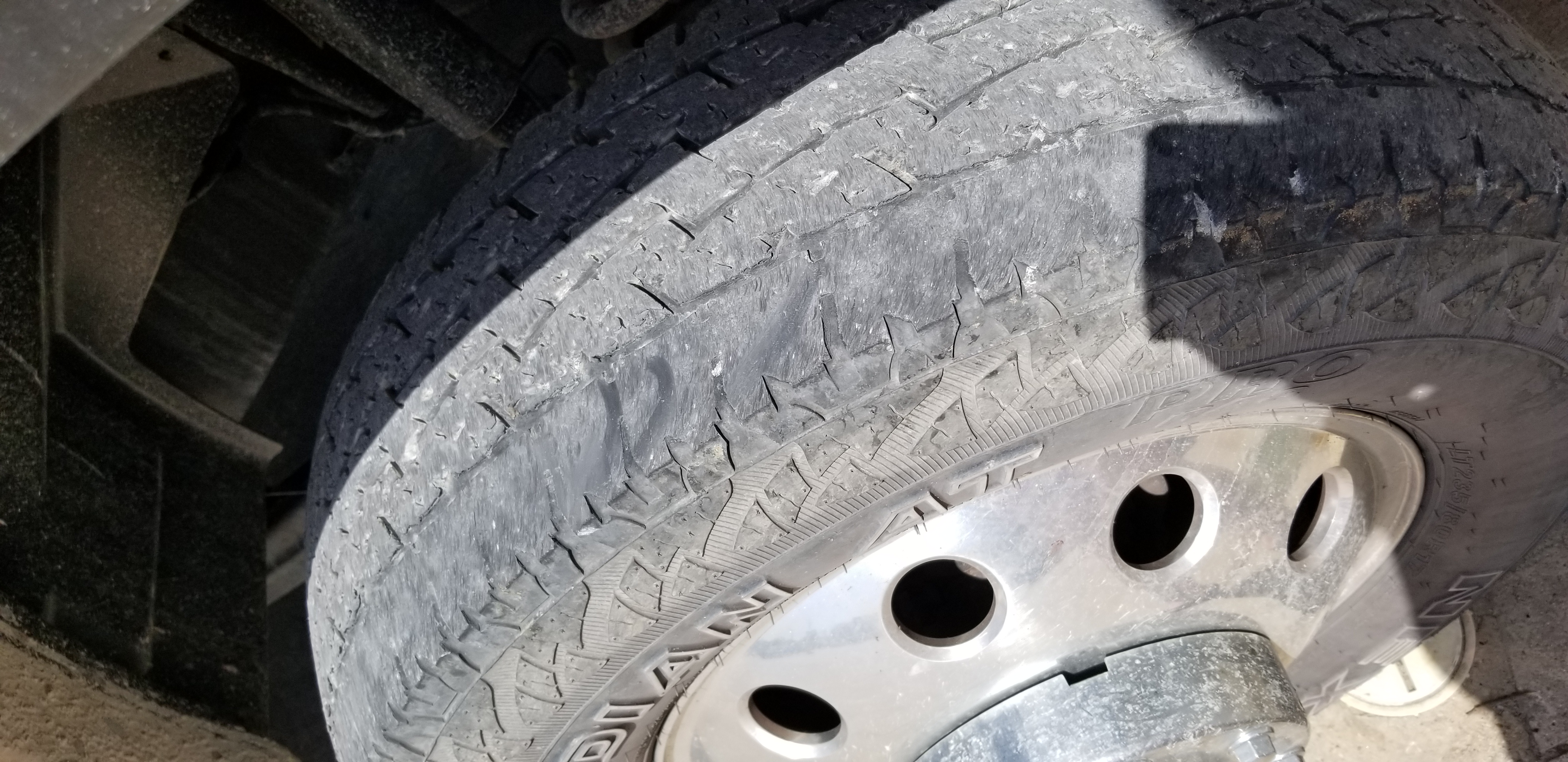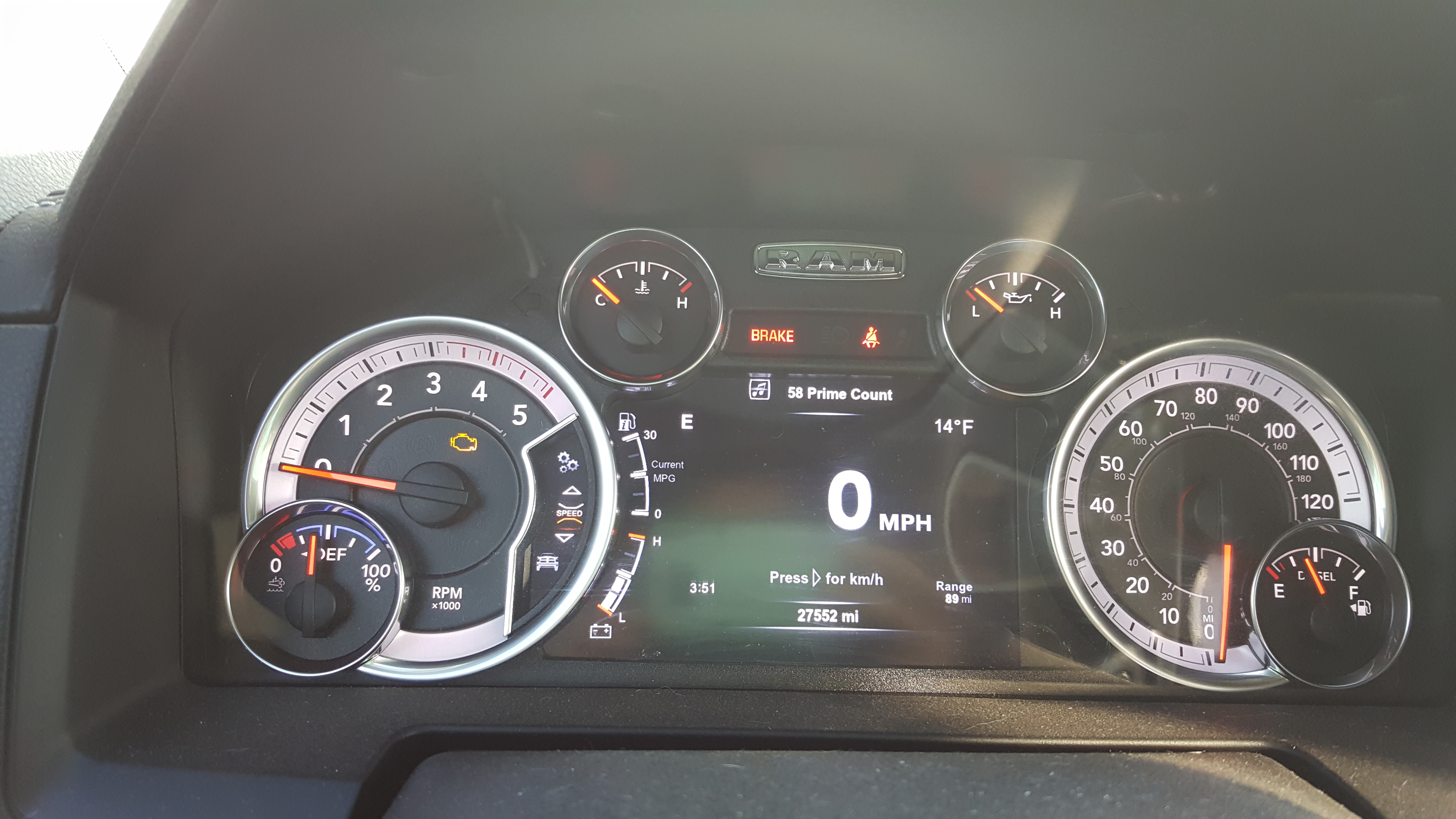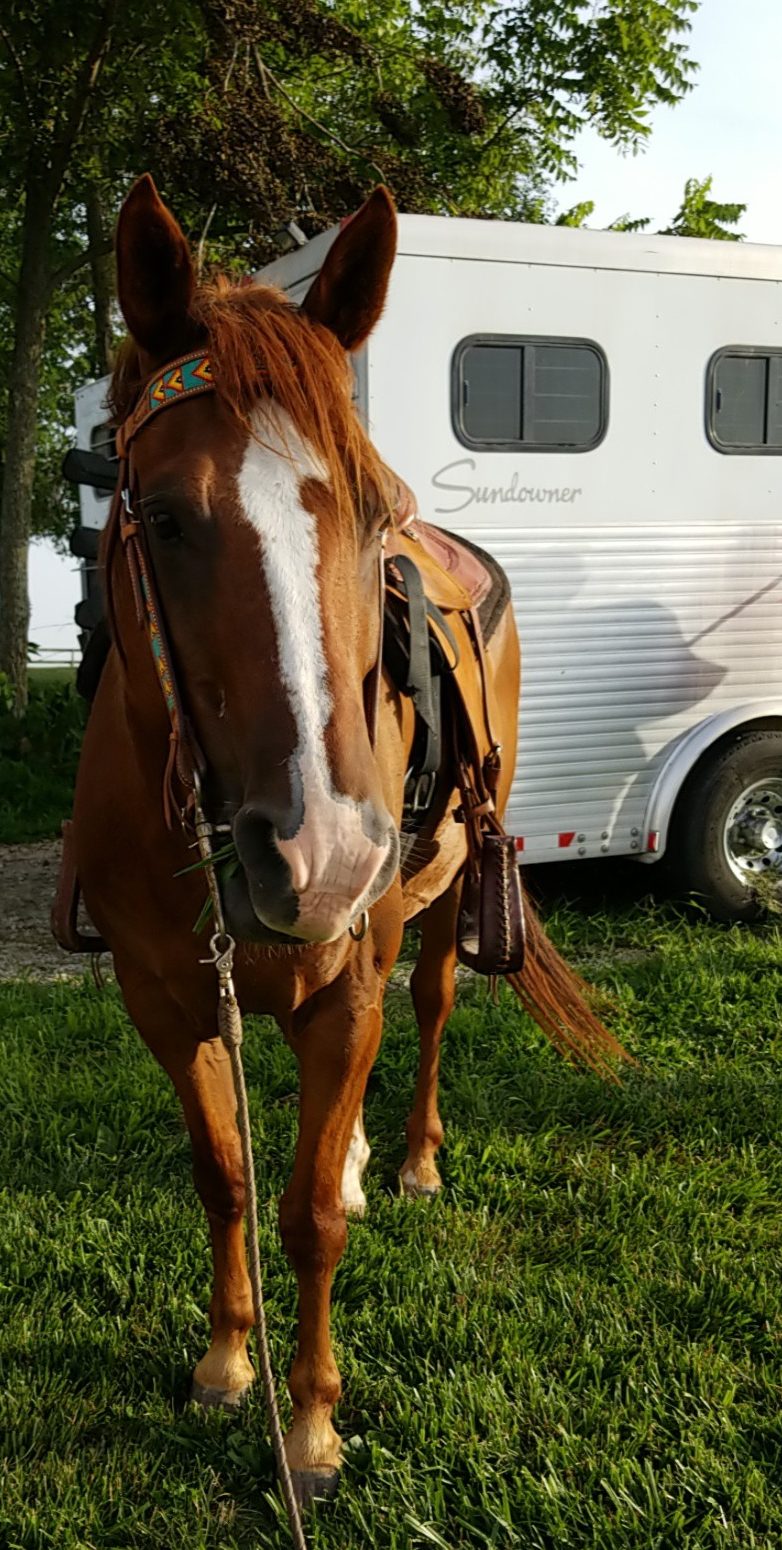
It’s that time of year again when people will load up and head to the fair or their favorite trail. Safety should always come first when it comes to our favorite equine companions.
What are some things that come to mind before heading out on the open road? Tires, brakes, lights, fluid levels, equipment checks, and of course the precious cargo…where do I begin? 
Starting as you back up and hook to the trailer, even with the wide variation in trucks and trailers available, there are fundamental equipment checks that can prove lifesaving!
I don’t know about you, but tires are at the top of my list! Depending on the truck and trailer, you’ll have at least 8 to worry about. Be sure to check for normal wear and tear, weather cracking and defects. This includes leaking or low tires, and ensuring that all truck and trailer tires are aired up to the proper manufacturer recommended PSI. And don’t forget to check the spare tire, too!

Your truck works hard to pull all that weight behind you, so it is a good idea to ensure all truck fluid levels are at adequate levels before heading down the road. Being able to stop is just as important as it is to go, so be sure truck and trailer brakes are in working order.
Last, but not least, lights. There is a lot that can go wrong with wiring and burned out bulbs, so see to it that all of your brake, tail and turn signal lights are shining bright!
Now, let’s talk about that precious cargo!
As you might imagine, loading, driving to your destination and unloading your horse can be a stressful event for you and your horse. During your routine training and/or exercising regiment, take some time to practice loading and unloading your horse so they can gain confidence. You want the horse to know the trailer is a good place to be, so remember to always end the exercise on a positive note!
Going down through the hauling checklist, we move care of the horse on the road. Combine high summer temperatures and the stress of hauling, and you could have a recipe for disaster!
Electrolytes are mineral salts that play major roles in fluid balance, nerve and muscle activity. Some of these key components are sodium, chloride and potassium. *During high-intensity exercise (18.5-21 mph), sweat loss levels can reach as high as 15 liters per hour. A well-formulated electrolyte supplement such as DuraLyte or Vitamins & Electrolytes, work to replenish the quantities of sodium, chloride and potassium.
In an average day of normal activity, a horse will drink between 5-10 gallons of water. If hauling long distances where the horse is going to get a good workout, make sure there is plenty of fresh water available. During intense exercise, water and electrolytes often become depleted and not replenished, so be sure to keep you and your horse hydrated!
Remember to be safe and enjoy your time atop your horse. A little planning and preparation can go a long way towards making your trips memorable for the right reasons!

 BACK TO MAIN BLOG
BACK TO MAIN BLOG 
Comment